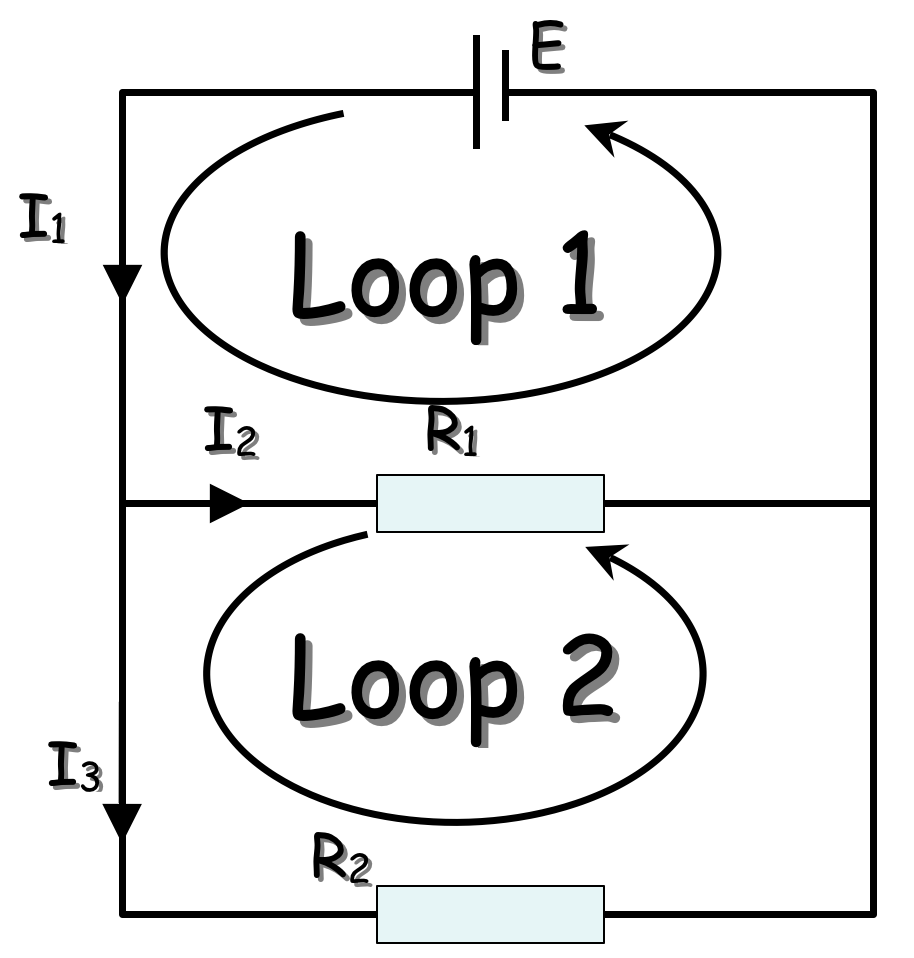Before going through these derivations it is advertised that you read up on Kirchhoff’s two laws and read through resistors in series and parallel first.
Using the following circuit setup and Kirchhoff’s laws, the equation for resistors in parallel can be derived;
 Using the definition for resistance the following three equations can be written for the relevant parts of the circuit;
Using the definition for resistance the following three equations can be written for the relevant parts of the circuit;
Since and therefore
we can write;
The power source is providing power to the entire circuit which consists of ALL the resistors,
Kirchhoff’s current law (KCL) tells us that (1)
Subbing the three equations above into equation (1) gives;
(2)
Since the resistors are in parallel to each other and the cell, each loop must have the same voltage and so (using Kirchhoff’s voltage law (KVL);
Equation (2) then becomes;
Divide the whole equation by to give:
Expanding this equation for more than just two resistors in parallel and we can write the full equation;
Further reading:
- Isaac Physics – Kirchhoff’s Laws – This is a reading resource

You must be logged in to post a comment.